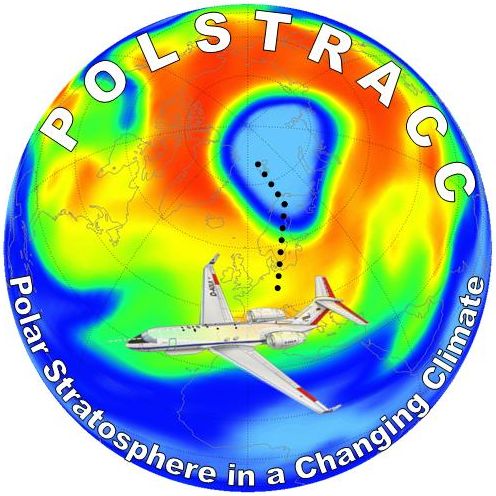POLSTRACC
The Polar Stratosphere in a Changing Climate
The polar stratosphere is of essential importance for the evolution of the global ozone layer and the climate system. Catalytic ozone destruction in the Arctic winter vortex leads to a seasonal thinning of Arctic stratospheric ozone. Chemical processed air resulting from the outflow of the polar vortex enters the Upper Troposphere/Lower Stratosphere (UTLS) region at lower latitudes, a region which is important for the climate system. The impact of global climate change on the evolution of the polar stratosphere and the lack of a detailed understanding of several key processes involved in polar stratospheric ozone destruction rather challenge predictions for the evolution of the ozone layer and the UTLS region in the future.
The HALO (High Altitude and LOng Range Research Aircraft) mission POLSTRACC aims on providing new scientific knowledge on the structure, composition and evolution of the Arctic UTLS in a changing climate. POLSTRACC will investigate chemical and physical processes involved in Arctic stratospheric ozone loss, the properties of polar stratospheric clouds and the influence of processed air from the polar vortex on the high- and midlatitude UTLS. In contrast to previous aircraft campaigns, a special focus is set on the Lowermost Stratosphere (LMS), a region where fast horizontal transport occurs and which is important for the atmospheric radiation budget. Utilizing the combination of field measurements and model simulations, POLSTRACC will help improving the understanding of the polar stratosphere and UTLS region in the atmospheric system in a changing climate.

The POLSTRACC mission will employ a payload of remote-sensing and in-situ instruments covering a variety of trace species and physical parameters of the atmosphere, with contributions from institutes of the Helmholtz Association, the National Aeronautics and Space Research Centre (DLR), the Max-Planck Society, universities and partners. The measurements will be complemented by atmospheric model studies on regional to global scale, allowing to test improved parameterisations of processes involved in chemical ozone loss, atmospheric dynamics and radiative properties.
A test campaign based in Oberpfaffenhofen, Germany, is planned for December 2015, allowing probing of the early polar vortex. The extended winter campaign in early 2016 will be based in at Kiruna Airport, Sweden (68°N), allowing deep penetration of the polar vortex and sampling the interface regions with the ambient high- and midlatitude UTLS region.